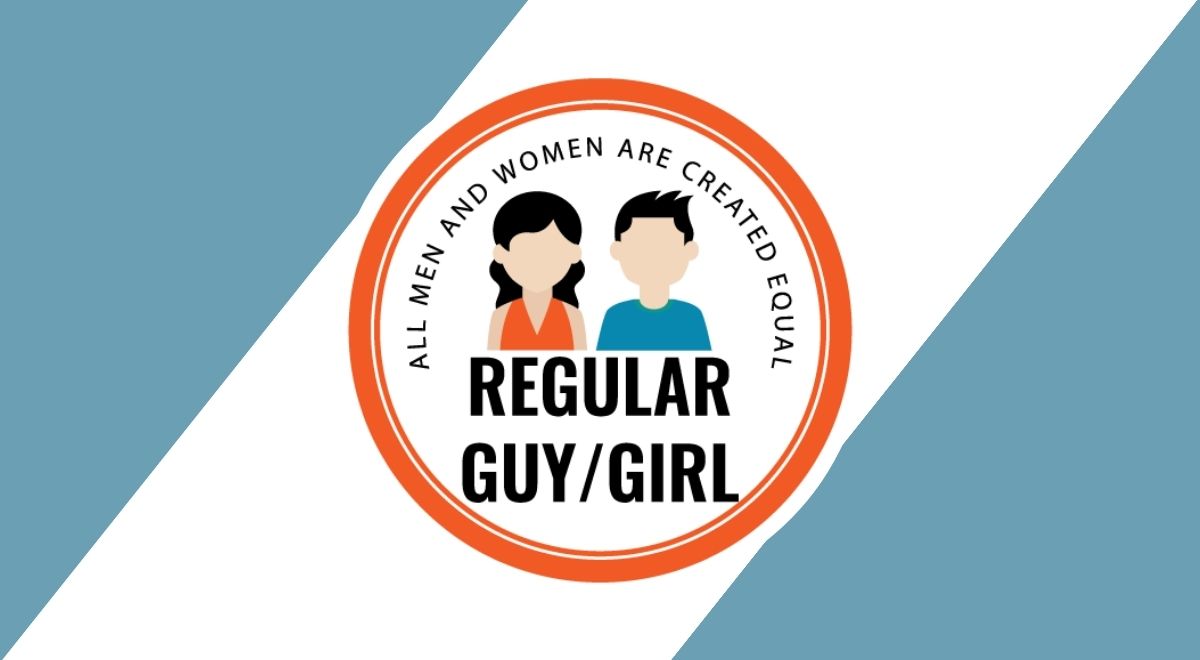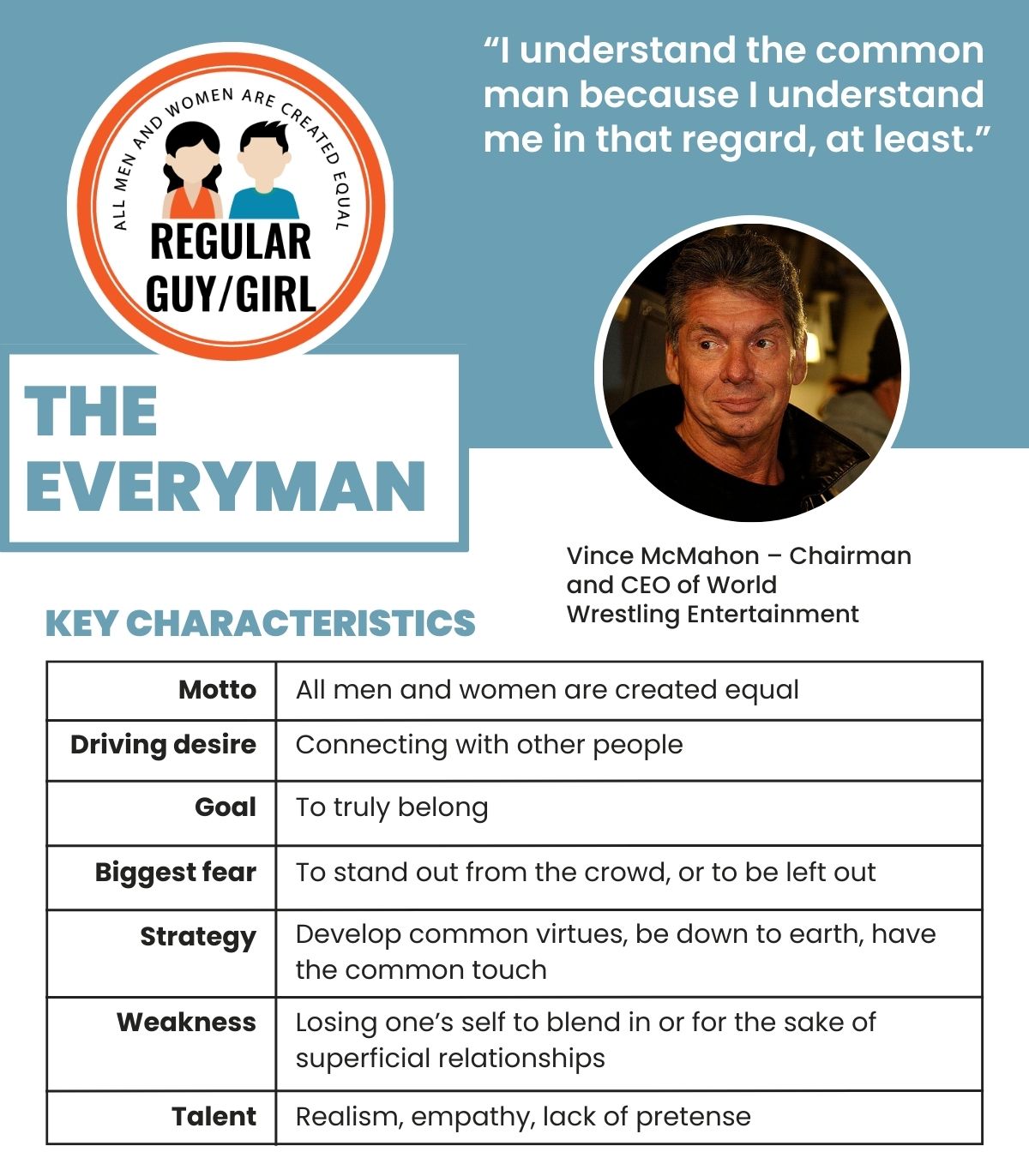Table of Contents
“I understand the common man because I understand me in that regard, at least.” – Vince McMahon – Chairman and CEO of World Wrestling Entertainment [1]
Introduction
The Everyman, sometimes called the Citizen, is just your average joe. They are empathetic and inherently likeable and relatable. This archetype appeals to the masses of people experiencing everyday life.
Also known as a good old boy, the person next door, everyman, the realist, the solid citizen, the working stiff, the silent majority, the good neighbor
Key Characteristics
- Motto:All men and women are created equal
- Driving desire:Connecting with other people
- Goal:To truly belong
- Greatest fear:To stand out from the crowd, or to be left out
- Strategy:Develop common virtues, be down to earth, have the common touch
- Weakness:Losing one’s self to blend in or for the sake of superficial relationships
- Talent:Realism, empathy, lack of pretense
Description of the Everyman
The Everyman desires to fit in. They would prefer not to stand out or be lauded for their accomplishments. This brand tends to represent ideals like honesty, hard work, and authenticity. This brand is often used in small businesses like local diners, who want to appeal to as many as they can by portraying a welcoming, nonjudgmental image. Businesses utilizing this archetype wish to show that their products will help you enjoy the simple things in life. They want to slow down the businesses pervading most aspects of everyday culture. Marketing schemes often include very informal, comfortable language. Businesses also often use money-back guarantees and implement trust-building practices with their customers to build a rapport.
The Everyman archetype has three levels to it. The first is expressed when the Everyman starts looking for community. This effort comes from a desire to fit in, something perhaps they previously did not have. The second level has the Everyman forming social bonds and finding a place in the community around them. They begin to grow and make connections. The third level has the Everyman genuinely becoming one of the people. In their community, the dignity and opinions of each person are upheld, regardless of any differences that exist.
An example of a business using the Everyman archetype is Target. Target fulfills the basic needs of its community. They are not extravagant and do not pretend to be. They promote everyday apparel, good, wholesome food, and a steady home life with a humble, friendly voice.
- Brand Motivations
- Connection
- Togetherness
- Fellowship
- Harmony
- Commonality
- Inclusion
- Equality
- Conformity
- Brand Challenges
- Isolation
- Dissociation
- Hostility
- Exclusion
- Standing Out
- Different
- Brand Strategy
- Provide a sense of commonality and belonging
- Empathizing with other people’s basic values and interests
- Creating the feeling of a welcoming community
The Everyman in the Wild
The following companies, organizations, and industries are good examples of the Everyman.
- Archetype Examples: Home Depot, Wendy’s, IKEA, Target, Covergirl, Gap, Discover, Budweiser, Moe’s Southwest Grill, Wrangler Jeans
- Industries: Home Products, Family Products and Services, Comfort Food, Comfortable Clothing, Mini Vans, and SUVs
Conclusion
Everyman’s goal is to blend in with the community seamlessly. In this position, they want to support the lives of those around them in simple but effective ways. Businesses utilizing the Everyman archetype should strive for transparency when possible, relationships with a deep foundation of trust, and a down-to-earth perspective in how they interact with their customers.
[1] “1196 Vince McMahon”, (n.d.), Retrieved from: https://www.forbes.com/profile/vincent-mcmahon/?sh=9560a2d1b897


